Close all unnecessary applications so that the installer can update system files without rebooting the computer.
Start the installer, then click Next. If this is a fresh installation, the Choose an installer page appears. (Illustrations below show EFT Server Enterprise installation; the procedure is the same for EFT Server SMB.)

Click the list and then click GlobalSCAPE EFT Server or GlobalSCAPE EFT Server Enterprise.
Click Next. After installation components are loaded, the Welcome page appears.
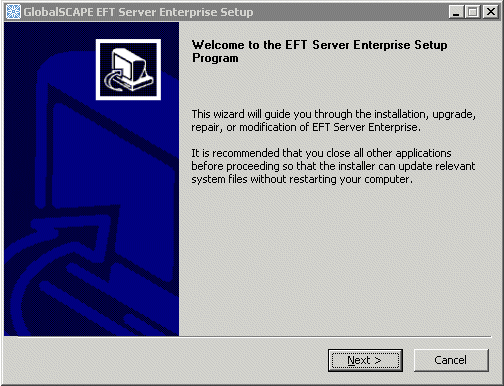
Read the Welcome page, then click Next. The License Agreement page appears.

Read the license agreement, then click I agree to accept it. (Clicking Cancel aborts the installation.) The Choose Components page appears.

To install only the administration Interface, clear the EFT Server check box. The EFT Admin Interface check box will still be gray, but it will install.
Click Next. The Choose Install Location page appears.
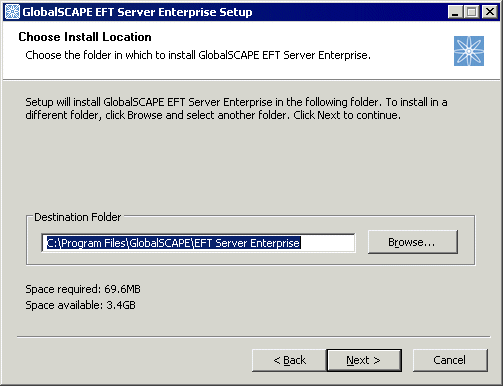
The default installation location appears in the Destination Folder box. Leave the default or click Browse to specify a different folder, then click Next. The Choose Start Menu Folder page appears.
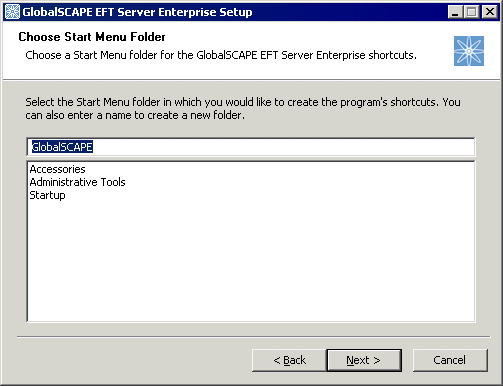
Keep the default shortcuts, specify an existing folder, or type a name for a new folder.
Click Next. The administration interface installs.
When installation is complete, click Next.
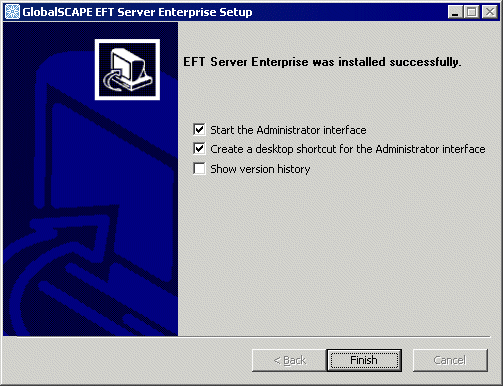
-
If you want to create a desktop shortcut for the administration interface leave the Create a desktop shortcut check box selected.
-
If you want to review the version history in your default text editor, select the Show version history check box.
-
Leave the Start the administration interface check box selected so that you can configure a connection to the remote EFT Server next.
Click Finish. The administration interface appears and the New Administrator Connection wizard starts.
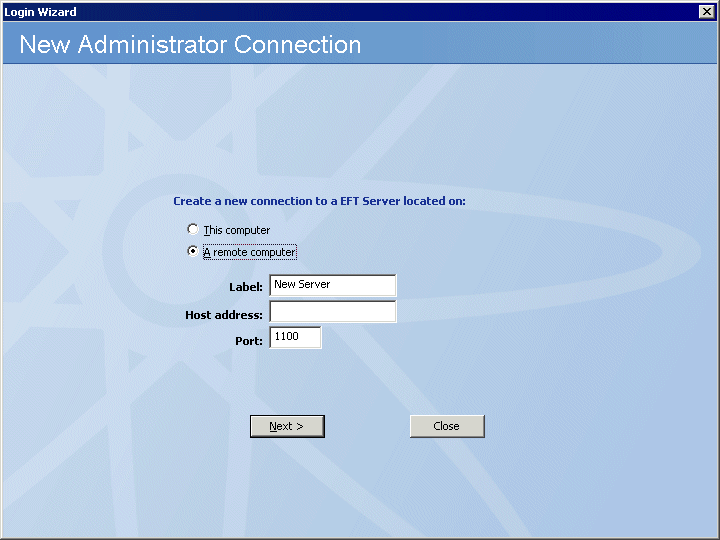
Click A remote computer, then specify the connection information for the remote EFT Server:
-
In the Label box, type the name of EFT Server to which you want to connect. You can call it anything you want; it has nothing to do with EFT Server's computer name. This name will appear in logs and reports.
-
In the Host address box, type the IP address of EFT Server computer.
-
In the Port box, type the port number used by EFT Server for remote connections.
Click Next. The EFT Server Administrator Login page appears.
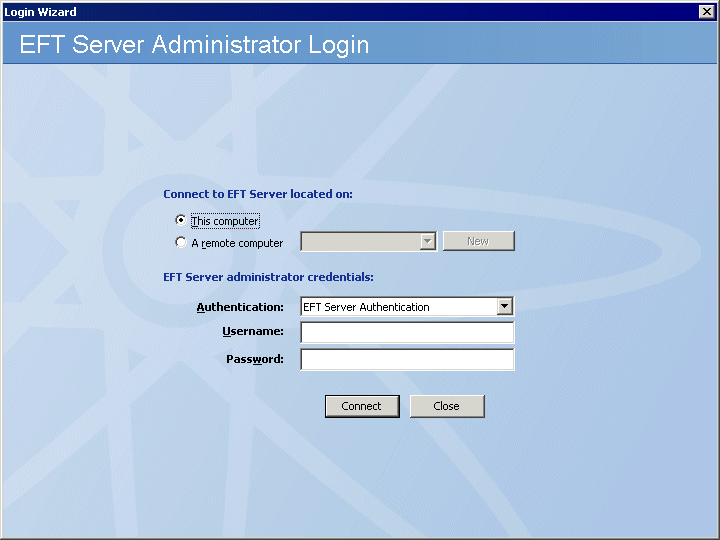
Click the Authentication box and specify the type of authentication to use for this login. Future connections will default to the authentication type that you specify during this initial login, but you can choose a different type. Authentication types include:
-
EFT Server Authentication - Choose this option to log in with an EFT Server-specified administrator account.
-
Integrated Windows Authentication - Choose this option to log in with an Active Directory or local Windows account.
-
Windows NET logon - Choose this option to log in with a local Windows account.
In the Username and Password boxes, provide the login credentials that you created during installation, then click Connect. The Welcome page appears.
-
If connection was not successful, verify the IP address and port on which EFT Server listens for connections, and be sure SSL is properly configured, if used, on EFT Server.
-
If connection was successful, the remote Server appears in the tree.
-
